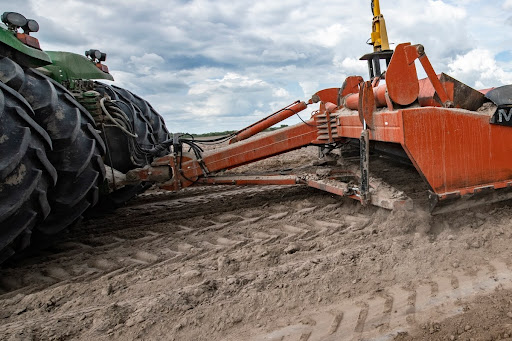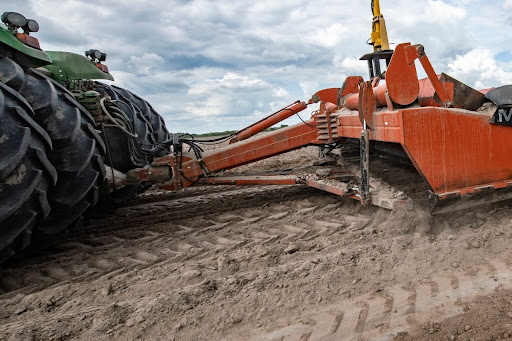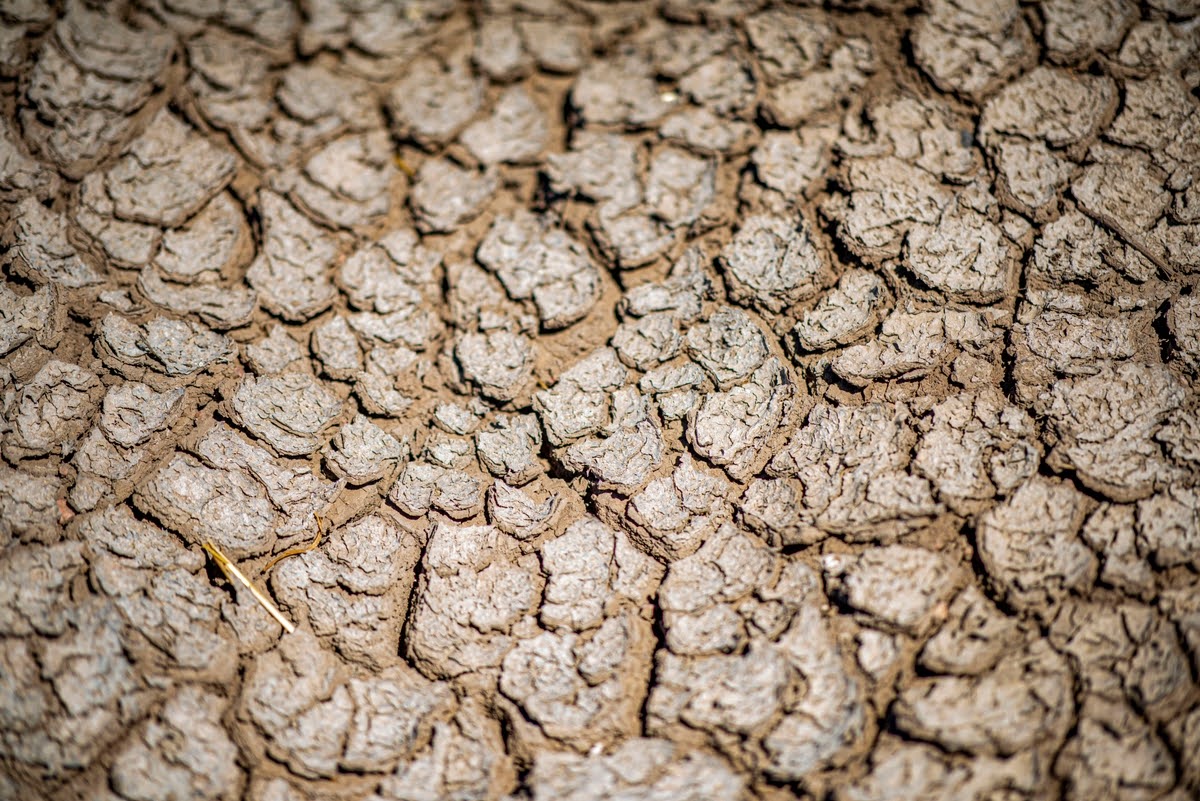Texas Clearing - Your Soil Stabilization Services Partner
Soil stabilization is a cornerstone of land management, especially in construction and agriculture. It’s a process that enhances the physical properties of soil, increasing its strength and durability. This is crucial in Central Texas, where diverse soil types can present unique challenges. As a landowner and operator of a soil stabilization service, I understand the importance of using the right techniques to ensure long-term stability and usability of the land.
You should read this article because it offers comprehensive insights into soil stabilization, a crucial process for ensuring the strength and durability of land in construction and agriculture, particularly in Central Texas’s diverse soil types.

I’ll answer the following questions:
- What is soil stabilization?
- How does soil stabilization contribute to land management?
- What are the different methods of soil stabilization?
- How do soil types affect stabilization techniques?
- What are the physical properties of soils important in stabilization?
- What are the commonly used stabilizers for various soil types?
- How does soil stabilization fit into your land improvement plan?
- What are the applications of soil stabilization?
What Is Soil Stabilization?
Soil stabilization involves altering soil properties to improve strength, reduce compressibility, and control permeability. This process is essential for construction projects, road building, and erosion control. Methods of soil stabilization range from mechanical compaction to the addition of stabilizing agents like cement, lime, or fly ash. These methods enhance the soil’s bearing capacity and make it more resilient to environmental factors like water ingress and freeze-thaw cycles. As a seasoned professional in this field, I’ve seen firsthand how effective soil stabilization can contribute to cost savings and long-term durability of structures and roads.

Definition of Soil Stabilization
Soil stabilization is a critical process in construction and land management, transforming weak soil into a strong foundation. It involves modifying the physical properties of soil to enhance its strength, load-bearing capacity, and stability. This process is essential for creating reliable bases for roads, parking lots, and buildings, ensuring they can withstand various environmental conditions without compromising structural integrity.
Overview of the Process
The soil stabilization process varies depending on the soil type and the intended use of the land. It often includes the addition of stabilizing agents like calcium chloride, cement, or lime to improve the soil’s mechanical strength and compressive strength. Techniques range from mechanical compaction to chemical stabilization, each tailored to address specific soil challenges, such as moisture content or organic content, and to achieve the desired stabilization effect.
It’s also crucial to consider the impact of existing vegetation, particularly tree stumps. Stump removal is an often overlooked but vital step in preparing land for construction or agricultural use. Removing stumps helps in achieving a more uniform soil composition and prevents future issues with soil settling or unevenness. It’s especially important in areas with dense tree growth or previously forested land. For comprehensive stump removal services that ensure your soil is free from obstructions and ready for stabilization, Texas Clearing’s stump removal services offer the expertise and equipment needed.
Types of Soils
Understanding soil types is critical in soil stabilization. In Central Texas, we encounter a variety of soils – from clayey soils, which are dense and retain water, to silty soil, known for its fine particles and susceptibility to erosion. Organic soils, while fertile, can be unstable for construction without proper treatment. Each soil type, whether it’s natural soils or clay-based, requires a specific approach in stabilization. For instance, clayey soils often need additives to reduce plasticity, while silty soils might require mechanical methods to enhance density. Recognizing these differences is key to effective soil stabilization.
Granular Soils
Granular soils, consisting of coarse particles like sand and gravel, are known for their good drainage but may lack cohesion. Stabilizing these soils often involves enhancing their shear strength and load-bearing capacity. Methods like mechanical soil stabilization or adding chemical stabilizers are employed to bind the particles together, creating a more solid and stable structure.

Clay Particle Soils
Clay particle soils are characterized by fine particles that can hold water, leading to expansion and contraction. This makes them one of the more problematic soils for stabilization. Techniques like enzymatic soil stabilization or the addition of lime can alter the soil’s properties, reducing its plasticity and improving stability.
In managing clay particle soils, addressing remnants of tree roots and stumps is essential. Stump grinding is a method that complements soil stabilization efforts in clay-rich areas. This process involves grinding down tree stumps to below ground level, which helps in minimizing soil disruption and maintaining the integrity of the clay soil structure. It’s a strategic step in preparing land with clay soils for construction or landscaping projects. For effective stump grinding services that cater to the unique challenges of clay particle soils, explore Texas Clearing’s stump grinding solutions.
Sandy Soils
Sandy soils, with their large, loose particles, pose challenges in terms of stability and load-bearing capacity. Stabilization methods for sandy soils often focus on increasing cohesion and reducing susceptibility to water erosion. Adding organic or chemical stabilizers can help bind the particles and enhance the soil’s overall stability.
Sandy soils, known for their loose structure, can benefit significantly from rock removal as part of their stabilization process. Removing large rocks and debris ensures a more consistent soil texture and facilitates better integration of stabilizing agents. This step is particularly important in areas where rocky terrain is prevalent. It prepares the sandy soil for further stabilization techniques, whether chemical or mechanical. For professional rock removal services that can enhance the stabilization of sandy soils, Texas Clearing’s rock removal services provide the necessary expertise and equipment.
Expansive Soils
Expansive soils, which swell when wet and shrink when dry, can cause significant structural damage over time. Stabilizing these soils requires careful consideration of their unique properties. Techniques like adding calcium-based additives or using mechanical methods can help mitigate the harmful effects of soil expansion and contraction.
Problematic Soils
Problematic soils, such as those with high organic content or adverse environmental conditions, require specialized stabilization techniques. These might include the use of synthetic polymers, cementitious products, or even advanced methods like confinement in geogrids to improve the soil’s load-bearing capacity and stability.
Physical Properties of Soils
The physical properties of soils, such as soil particles size, moisture content, and density, play a significant role in determining the appropriate soil stabilization techniques. For instance, soils with high clay content may benefit from the addition of cementitious materials to improve tensile strength, while sandy soils might need a different approach, like the incorporation of a polymer-based stabilizer. Understanding these properties helps in selecting the right stabilization method, whether it’s chemical, mechanical, or a combination of both. This knowledge is crucial in achieving the desired stability, especially in areas with challenging climatic conditions and varying geotechnical properties.
Shear Strength
Shear strength is a key property of soil, determining its ability to resist sliding along internal surfaces. In soil stabilization, enhancing shear strength is crucial, especially for soils under structures or heavy traffic. Techniques like adding cementitious agents or mechanical compaction are used to increase the soil’s shear strength, ensuring stability and safety.
Load Bearing Capacity
The load-bearing capacity of soil is its ability to support weight without undergoing deformation. Stabilizing soil to improve this capacity is essential for construction projects, as it ensures the ground can support buildings, roads, and other structures. Methods like the inclusion of fibers or chemical additives are employed to enhance this property.
Wet vs. Dry Soil Properties
Understanding the differences in soil properties when wet versus dry is vital for effective stabilization. Wet soils may become weak and unstable, while dry soils can be too hard and brittle. Stabilization techniques must account for these variations, using methods like optimizing moisture content or employing dust control products to maintain the soil’s integrity in different conditions.
Layers of Different Types of Soil
Different types of soil may be present in layers, each with unique properties and stabilization needs. Addressing these layers effectively requires a comprehensive approach, considering factors like the concentration of water, organic materials, and the presence of clay content. Tailored stabilization methods are applied to each layer to achieve a uniformly stable soil structure.

Commonly Used Stabilizers for Various Soil Types
Different soil types respond differently to various stabilizers. For clayey and organic soils, lime and cement are commonly used due to their ability to create cementitious bonds and improve soil strength. In contrast, silty and sandy soils may benefit more from mechanical stabilization methods like compaction. Additionally, innovative solutions like enzymatic soil stabilizers are gaining popularity as a friendly alternative to traditional methods. These stabilizers work by altering the soil’s chemical properties, enhancing its strength and resistance to environmental factors.
Calcium Chloride (CaCl2)
Calcium chloride (CaCl2) is a widely used soil stabilizer, especially effective for dust control on unpaved roads and in construction sites. It works by attracting moisture from the air, keeping the soil damp and compact. This not only reduces dust but also improves the soil’s compaction and strength. It’s particularly useful in dry, arid environments where maintaining optimum moisture content is challenging.

How Soil Stabilization Fits Into Your Land Improvement Plan
Soil stabilization is a cornerstone of effective land management and development. Whether you’re building a new structure, laying a road, or preparing a site for landscaping, stabilizing the soil ensures a solid foundation. It prevents issues like erosion, sinking, or shifting that can compromise the integrity of your project. Integrating soil stabilization into your land improvement plan is a proactive step towards ensuring long-term durability and safety.
Get Your Free Quote
For landowners looking to embark on construction or land improvement projects, understanding the nuances of soil stabilization is key. Reach out to us for a free quote and consultation on how we can tailor soil stabilization solutions to fit your specific needs, ensuring your land remains stable, safe, and ready for any project.
FAQ
The five main types of soil stabilization are mechanical, chemical, cement stabilization, enzymatic, and fiber reinforcement. Each type addresses different soil challenges and is chosen based on soil properties and project requirements.
The principles of soil stabilization involve altering the physical and chemical properties of soil to improve its strength, durability, and load-bearing capacity. This is achieved through the addition of stabilizers, compaction, and other techniques to create a more stable and reliable soil base.
Soil stabilization measures include adding chemical additives like lime or cement, mechanical compaction, using synthetic polymers, and employing advanced techniques like enzymatic stabilization or fiber reinforcement.
Soil stabilization is applied in road construction, building foundations, landscaping, and any project requiring a stable and durable soil base. It’s essential for ensuring the longevity and safety of structures and surfaces built on the stabilized soil.
Common soil stabilizers include calcium chloride, lime, cement, synthetic polymers, and enzymatic stabilizers. Each stabilizer is chosen based on the specific needs of the soil and the project.
Hydrated lime is a key component in soil stabilization, offering numerous benefits. When mixed with soil, it initiates a pozzolanic reaction, forming a chemical bond that enhances soil strength. This reaction is particularly effective in clay-based soils, transforming them from unstable to robust. The addition of hydrated lime also helps in managing the optimum water content in the soil, crucial for maintaining the desired consistency and preventing excess water ingress. This method is part of a wide range of soil stabilization techniques, showcasing its versatility in different soil conditions.
